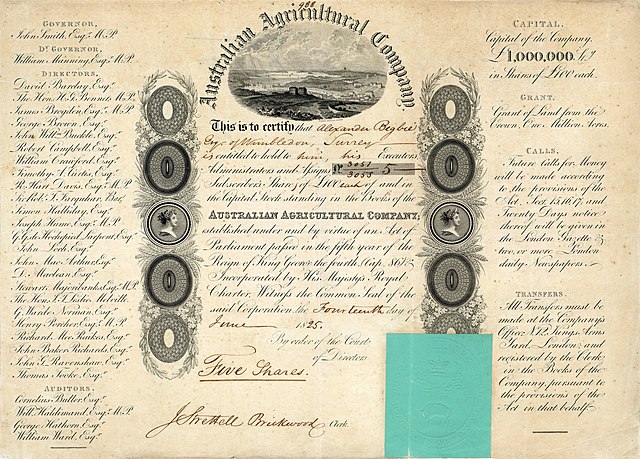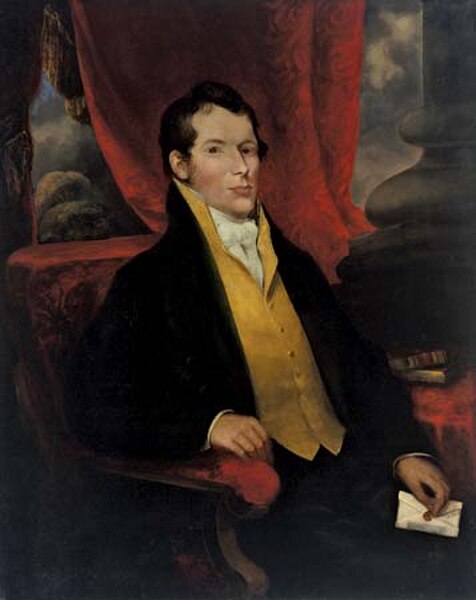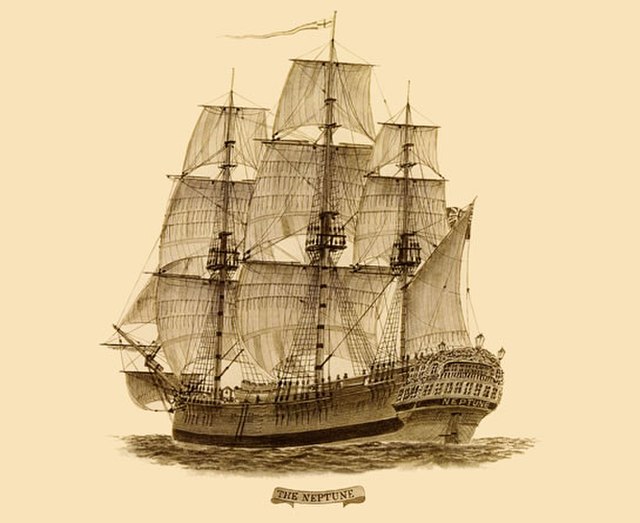Australian Agricultural Company
The Australian Agricultural Company (AACo) is a public-listed Australian company that, as of 2018, owns and operates feedlots and farms covering around seven million hectares of land in Queensland and the Northern Territory, roughly one percent of Australia's land mass. As of July 2008 AACo had a staff of 500 and operated 24 cattle stations and two feedlots, consisting of over 565,000 beef cattle.
Founder's stock certificate of the Australian Agricultural Company for 5 shares of £100 each, issued 14 June 1825, printed on parchment
Australian Agricultural Company plaque on a sandstone column at Learmonth Park, Hamilton, dated 1914.
Sandstone columns erected in Gordon Avenue, Hamilton. Dated 1914.
Grave stone of John Marland, who died while working in the Hamilton Borehole; located behind Christ Church Cathedral, Newcastle.
John Macarthur (wool pioneer)
John Macarthur was a British Army officer, entrepreneur, landowner and politician who was a highly influential figure in the establishment of the colony of New South Wales. He was also a pioneer of the Australian Merino wool industry, and was instrumental in agitating for, and organising, a rebellion against Governor William Bligh in what is now termed as the Rum Rebellion in January 1808.
John Macarthur (wool pioneer)
The Neptune of the Second Fleet
Painting of Elizabeth Farm by Joseph Lycett (c.1825)
An Australian stamp commemorating Macarthur and the wool industry








